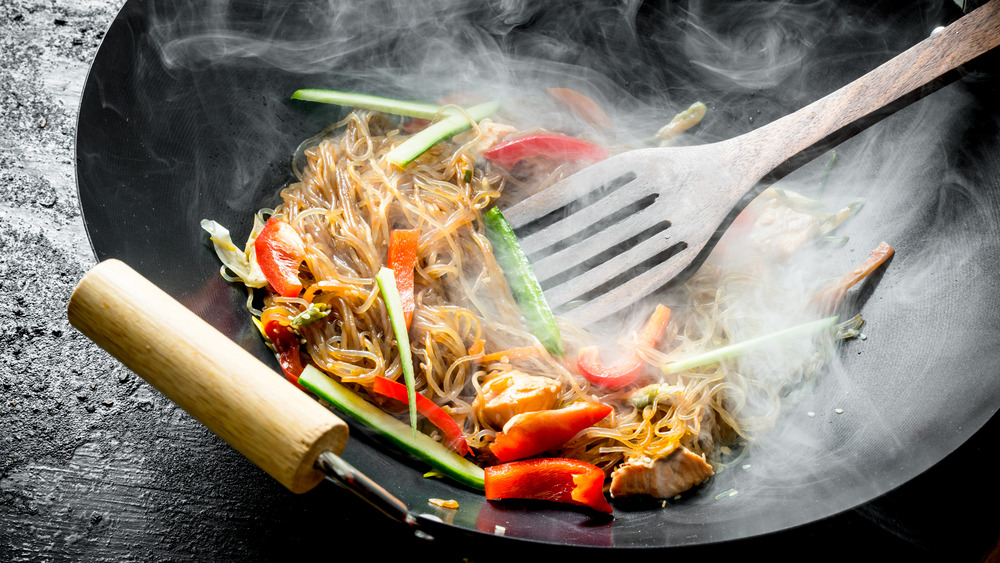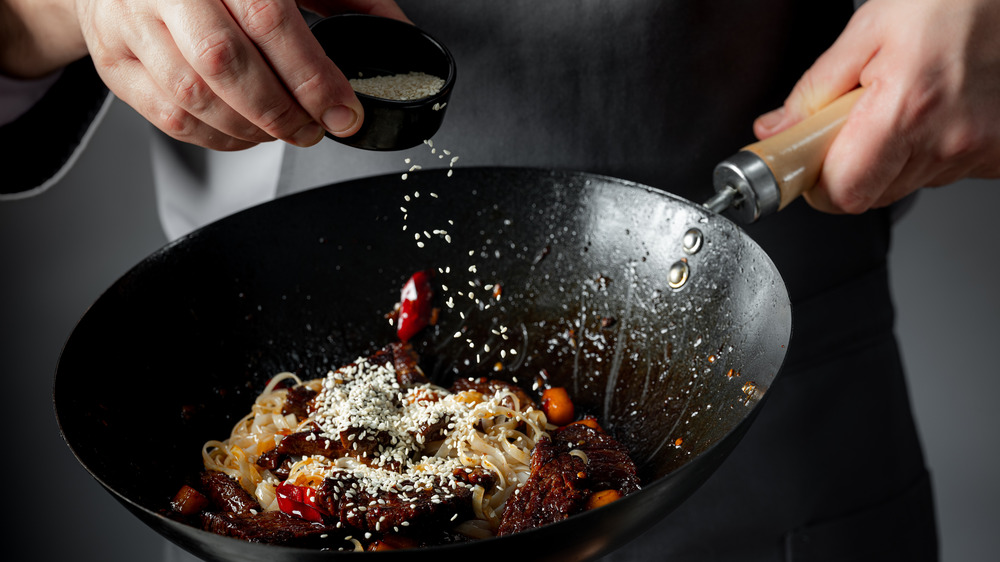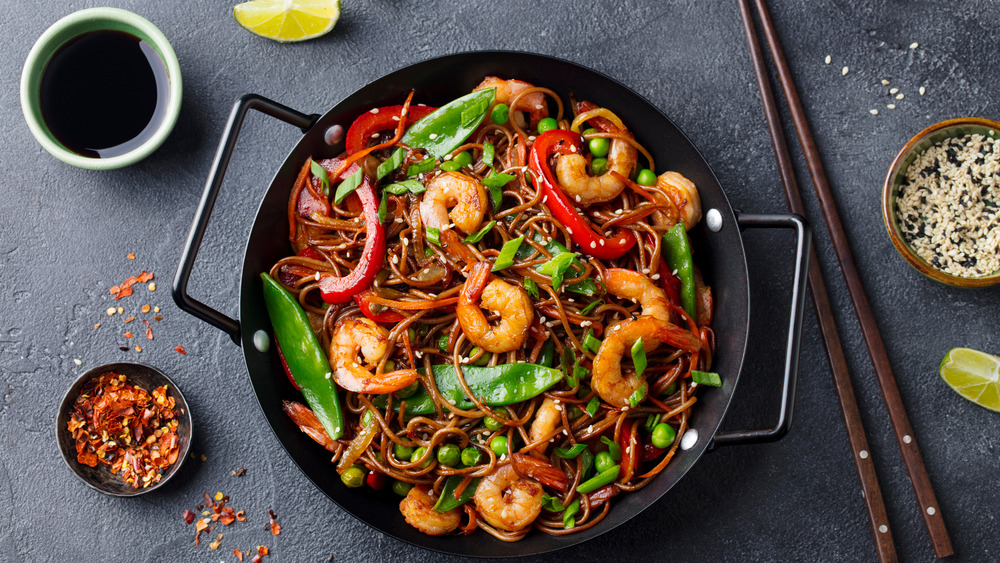Why You Shouldn't Put Too Many Ingredients In Your Wok
If you're anything like us, your wok is one of your most cherished pieces of cooking equipment, reliably turning out spicy stir-frys, crispy spring rolls, and juicy dumplings. When used correctly, a well-seasoned wok can be an incredibly versatile pan which can handle steaming and deep-frying in addition to sautéing and searing.
But owning a wok can have its pitfalls, too. These common mistakes range from using the wrong type of cooking oil to not cleaning your wok right. But there's one glaring mistake that trips up so many home cooks it deserves an article all on its own. And that mistake is overcrowding your wok. From creating too much moisture to inhibiting char, this error will set you back if your aim is to serve up balanced, not-too-wet, not-too-dry stir frys with just the right amount of wok hei, or "breath of the wok," (via Michelin Guide). Read on to discover what you're doing wrong — and how to make it right.
Don't put too much food in your wok
When SBS asked 2010 MasterChef winner and cookbook author Adam Liaw for his number one tip for wok cookery, his response left no room for doubt.
"Just one? Okay, if I had to pick only one, it's don't overcrowd the wok," he said. "That's the number one thing. Even if you do everything else right, and then overcrowd the wok, it's going to turn out awful. If you do a bunch of other stuff wrong and don't overcrowd the wok, you've got a pretty good chance of it turning out okay."
Here's why Liaw's tip is of the utmost importance: When you overcrowd a wok, your ingredients steam instead of char, leading to a soggy mess of a random mix of ingredients instead of a well-balanced dish that highlights each vegetable and protein in your stir fry. And when your dish is a soggy mess, the ingredients won't char — and that char, after all, is what we're going for when we pull out a wok instead of a standard sauté pan or cast iron skillet.
How to do to wok cooking right
So now that you know what mistake you're making, here's how to correct it: Use a scorching-hot wok, and cook your ingredients in batches instead of throwing everything in all at once.
Any wok recipe worth its salt will list a precise order in which to stir fry its ingredients. As each batch is cooked, it is removed from the wok; only later do all of the ingredients get added back, typically with some type of sauce to pull everything together. In Serious Eats' recipe for Stir-Fried Beef with Chinese Broccoli, the site instructs cooks to empty the wok between steps like flash-steaming the broccoli and stir-frying the marinated beef before mixing it all together.
If everything were to be dumped in at the same time, neither the broccoli nor the beef would have had an opportunity to sear. Instead, they would have steamed, coming out soggy instead of nicely browned (in the case of the beef) or crisp-tender (in the case of the veg).
So the next time you bust out your wok, keep things nice and loose in there. Cook your ingredients in batches and don't be afraid to turn up your burner. Go ahead and capture the breath of your wok — you won't regret it, and neither will your dinner guests.


